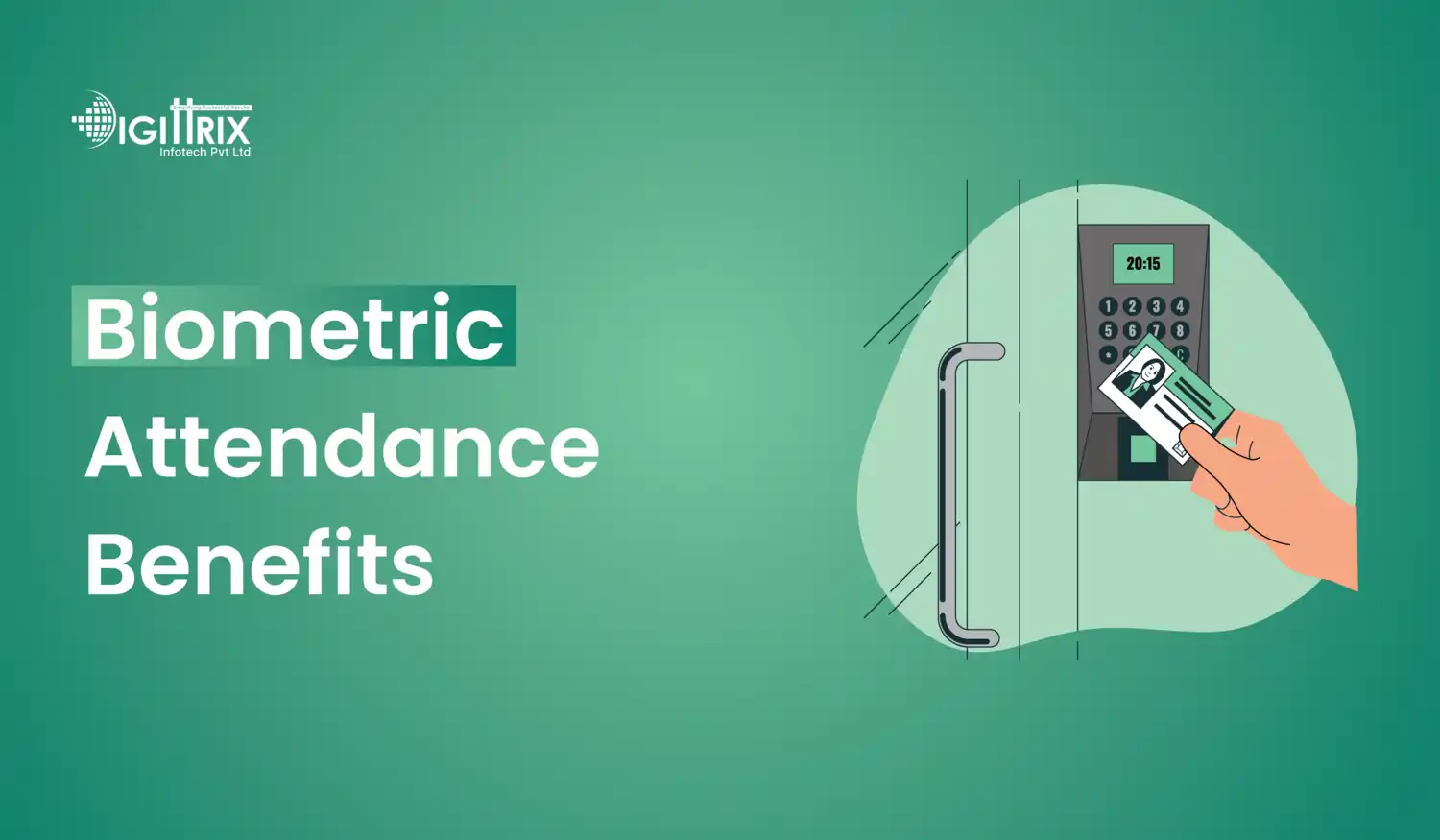Biometric attendance systems help to improve the accuracy of attendance, eliminate proxy attendance, and ease record-keeping in educational institutions. They contribute to enhanced security, less administrative time, and ensure real-time monitoring of students and staff. Automated attendance tracking upholds discipline and improves institutional efficiency.
Highlights
With Over 14 years of Experience in the IT Field, Helping Companies Optimise there Products for more Conversions

Education plays a crucial role in shaping the future, and maintaining discipline in schools and colleges is essential for educational success. The main challenge education institutions must tackle involves actual attendance monitoring of students together with staff members. Regular attendance records made by roll calls and manual registers remain sensitive to errors and manipulation. Biometric technology introduced better attendance recording by offering precise and protected methods to verify attendance.
The designation process of biometric attendance depends on unique physical features which include fingerprints, facial identification and iris pattern scanning. Such systems provide institutions of education with various benefits which position them as top choices for educational institutions.
The implementation of biometric attendance systems prevents students from substituting one another for attendance purposes as it is a general problem in academic institutions. Every person in the world has unique fingerprints and distinct facial features which prevent students from substituting their classmates for attendance purposes. The exact nature of biometric attendance systems leads to trustworthy records because there is no room for errors. The method eliminates manual requirements for attendance management thus reducing human error during the process.
Manual attendance takes up valuable time during class sessions. Teachers often spend several minutes calling out names, which can add up to significant time lost over a semester. With a biometric attendance system, students can mark their attendance in a matter of seconds, allowing teachers to focus on teaching rather than administrative tasks.
Class time is negatively impacted when students perform attendance manually. The method of naming students out loud consumes multiple minutes during each session thus resulting in significant collective time division across an academic term. The speed at which students use biometric attendance enables teachers to instruct the class without needing to perform organisational responsibilities.
Educational institutions that employ paper-based registers need to handle extensive record volumes. Biometric attendance systems occupy storage space at the same time they can become complex to manage as time goes by. Biometric attendance systems transform manual attendance logging into digital records which produces more streamlined data storage functions. Schools and colleges can obtain access to records through simple click-based processes which help decrease administrative efforts.
Many schools and universities face difficulties when students need to report the attendance of absent classmates. Such practice creates inaccurate records that minimize the credibility of academic assessment results. The fingerprint attendance system operates in a manner that permits attendance marking only by users who have authorized biometric information. Such a system prevents students from committing fraud while maintaining their accountability in academic settings.
A biometric attendance system can be integrated with other school management software. Institutions using custom software development can link biometric data with student portals, academic records, and fee management systems. This creates a unified platform where all student-related data is easily accessible, making management more efficient.
A software development company can create an electronic attendance system that automatically produces reports. The system generates analytical reports regarding student attendance data which enables administrators to detect students who have ongoing class absences. The analysis of absenteeism patterns can help administrators develop corrective strategies that include counselling sessions as well as notifications to parents.
Biometric attendance systems function as attendance trackers alongside various additional operational capabilities. Secure facilities become possible through systems that withhold unauthorized persons from entering authorized areas. The access points in schools become managed through biometric authentication methods which limit entry only to registered students and staff members. The system functions as a protective barrier to keep out unregistered persons which results in enhanced security for school facilities.
Empower your educational app with AI! Discover how Digittrix is changing the learning landscape today!
Manually maintaining attendance records, preparing reports, and addressing discrepancies can be time-consuming. Biometric technology automates these processes, reducing the workload for administrative staff. Teachers no longer need to manually verify attendance, and administrators can access accurate data anytime without additional effort.
The use of biometric attendance systems leads students to maintain proper timekeeping practices. The actual timestamp entries stored in the system allow for precise documentation of all late arrivals. Education facilities implement rules that result in penalties against students who arrive late multiple times. The implementation of this system creates an environment where people learn to be punctual which represents an essential life skill.
Although the initial cost of installing a thumbprint attendance system may seem high, it proves cost-effective in the long run. It reduces the need for paper registers, manual record-keeping, and administrative efforts, saving institutions money. Additionally, preventing proxy attendance ensures that educational resources are utilized effectively, as students who are present can benefit from the learning process.
Going digital with biometric attendance helps reduce paper usage, making it an environmentally friendly option. Schools and universities consume a large number of paper registers annually, contributing to deforestation. By switching to biometric attendance, institutions can support sustainability efforts while improving efficiency.
Biometric attendance is not just for students; it is also beneficial for monitoring staff attendance. Teachers and non-teaching staff can mark their attendance using fingerprint recognition, preventing discrepancies in working hours. This helps in payroll processing, ensuring fair compensation based on actual working hours.
Online education benefits from the combination of biometric attendance systems with facial recognition technology which enables monitoring of virtual class attendance. Learning management systems of certain institutions implement biometric authentication tools to check student interactions within their virtual coursework. The system helps verify active student engagement in classes rather than false presence because students must appear alive during sessions.
Identified properly by their users, a well-built biometric attendance solution provides smooth access to all users including students, administrators and teaching staff. The installed system needs minimal maintenance efforts. The regular software updates provided by software development companies ensure smooth functionality, making biometric attendance a hassle-free solution for educational institutions.
Educational institutions connect their biometric attendance systems to send automatic alerts via SMS or email messaging services for parents. Students who attend class using fingerprint or facial recognition gain instant notification sent to their parents regarding their school presence. Student accountability improves when parents receive automatic updates because this service keeps them informed about their children's school attendance.
Students participate in regular classroom attendance when they understand their records will be properly documented through biometric systems. Through biometric tracking, schools experience fewer student absences because students are aware that their absences become detectable by the system. The implementation of this system leads to improved academic performance together with better school conduct.
Expanding institutions that maintain multiple campuses can achieve unified staff and student attendance monitoring through the implementation of biometric attendance systems. Through a unified dashboard, administrators achieve better coordination by accessing attendance records of all their educational branches simultaneously.
An institution has the flexibility to modify a biometric attendance system according to its requirements. The implementation of student attendance management boils down to three options which include fingerprint verification together with facial recognition technology or RFID-based systems. Institutional software developers enable organizations to integrate supplementary features like access regulation and visitor tracking and marking students based on their presence.
As institutions expand, their attendance management needs also grow. A biometric system can easily scale to accommodate more students and staff without requiring major infrastructure changes. This makes it a future-ready solution for schools and colleges planning long-term growth.
Biometric attendance systems provide educational institutions with an accurate, secure, and efficient method of tracking attendance. By reducing manual errors, preventing proxy attendance, and automating reporting, these systems simplify attendance management. With integration options for other school systems, biometric technology improves overall efficiency and security. Schools and colleges looking for an advanced attendance solution can benefit from biometric systems, ensuring a disciplined and well-organized academic environment.
Educational institutions often rely on traditional attendance methods, which can be time-consuming and prone to errors. While manual systems provide basic tracking, they lack the accuracy and security needed in modern academic environments. Biometric attendance systems, on the other hand, offer a reliable and efficient way to manage student and staff records with precision.
At Digittrix, we specialize in biometric attendance solutions, helping educational institutions shift from outdated attendance tracking to automated and secure biometric systems. Whether you need a fingerprint attendance system, facial recognition, or a fully integrated electronic attendance system, our experienced team ensures a smooth and efficient implementation process.
Looking to improve attendance accuracy and security? Contact our technical team today at +91 8727000867 or email us at digittrix@gmail.com.
Let’s create a smarter attendance management system that enhances efficiency and discipline in educational institutions!

Do you need help in Web Development ?




Join over 1500+ businesses we've already helped!
CRM (Customer Relationship Management) software helps businesses manage and analyze customer interactions and data. It improves customer service, enhances communication, and automates sales and marketing processes, leading to increased efficiency and stronger customer relationships.
ERP (Enterprise Resource Planning) software integrates all business functions, such as accounting, inventory management, human resources, and supply chain operations, into a single system. This centralization improves resource management, streamlines processes, and enhances decision-making.
Custom CRM and ERP solutions are tailored to meet your business’s specific needs, allowing you to integrate features that suit your industry. Unlike off-the-shelf solutions, custom software ensures that your business can scale efficiently and provides greater flexibility.
CRM and ERP software benefits a wide range of industries, including retail, healthcare, manufacturing, logistics, education, and e-commerce. Businesses in Auckland, Wellington, Christchurch, and other cities can leverage these solutions to optimize operations and improve customer service.
With the increasing adoption of digital solutions and cloud technology, the demand for CRM and ERP software is expected to grow. Businesses in New Zealand will continue to benefit from these solutions to streamline operations, improve customer relationships, and make data-driven decisions.

©2025Digittrix Infotech Private Limited , All rights reserved.